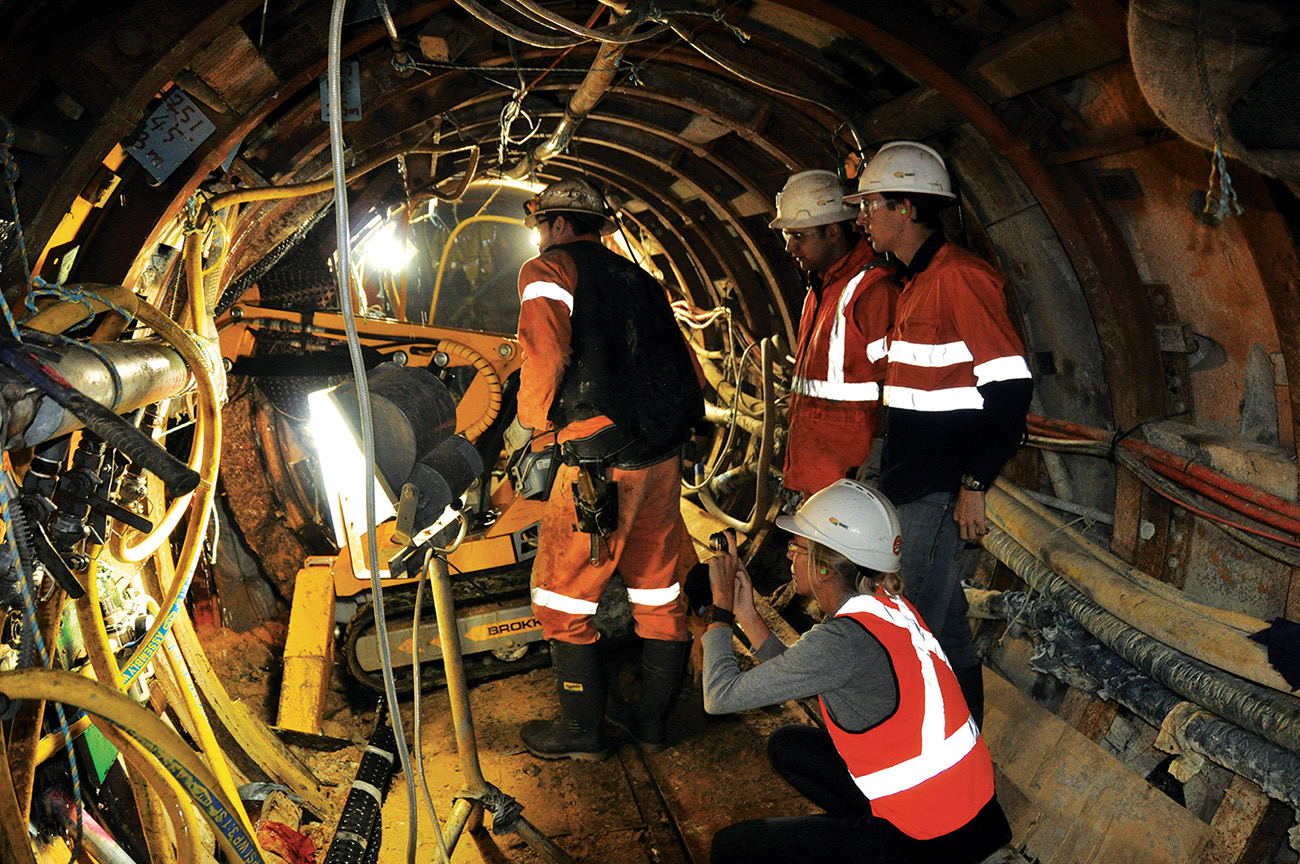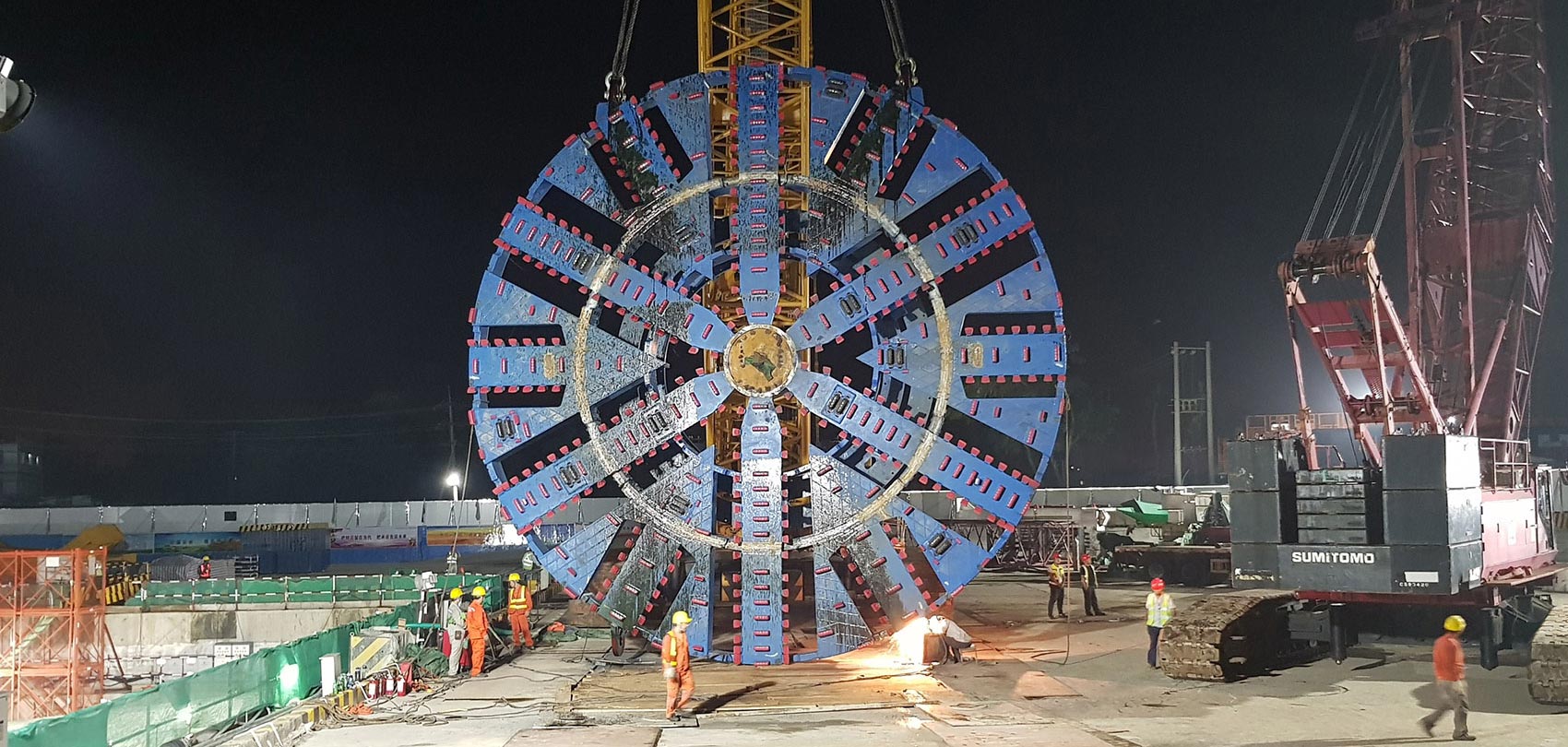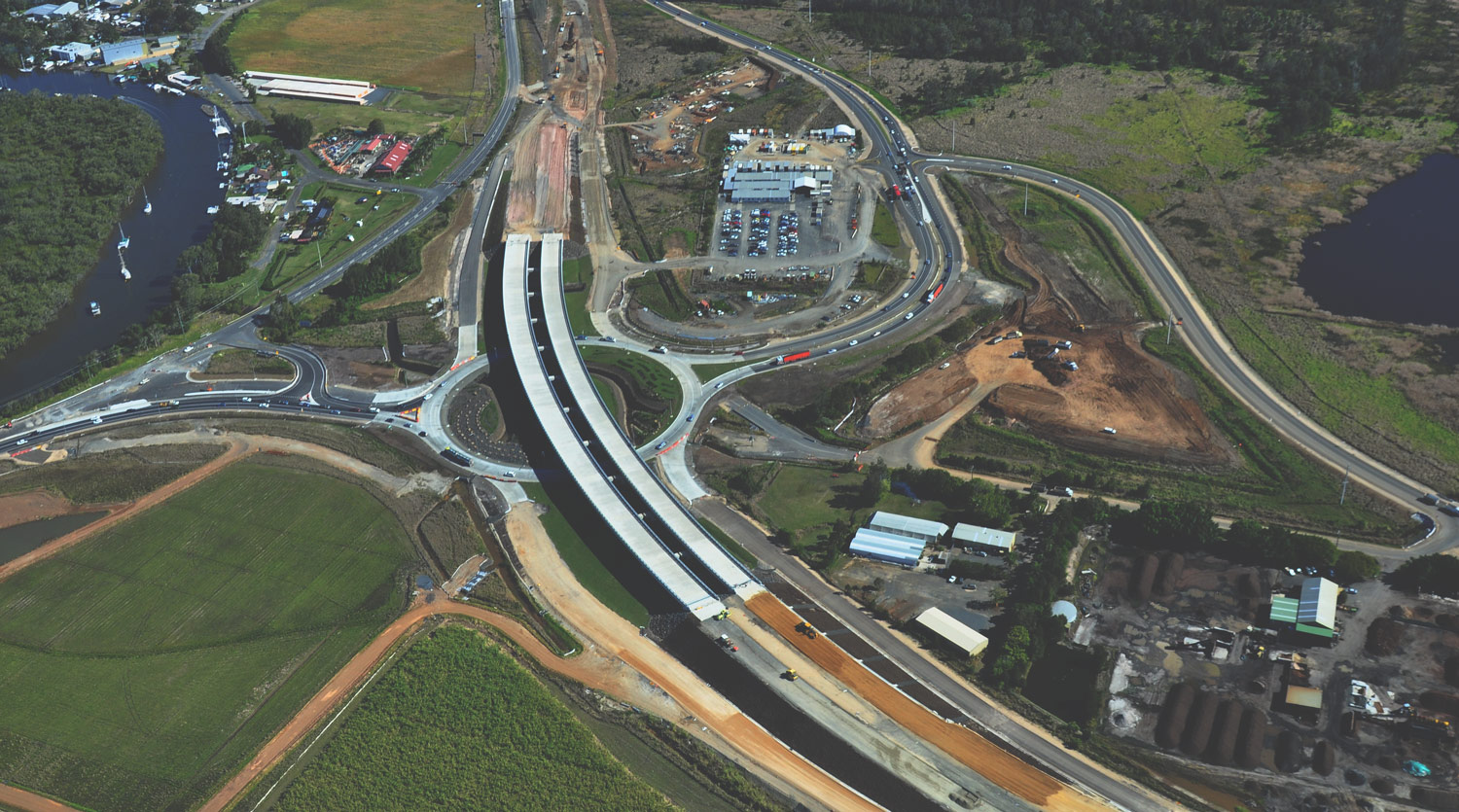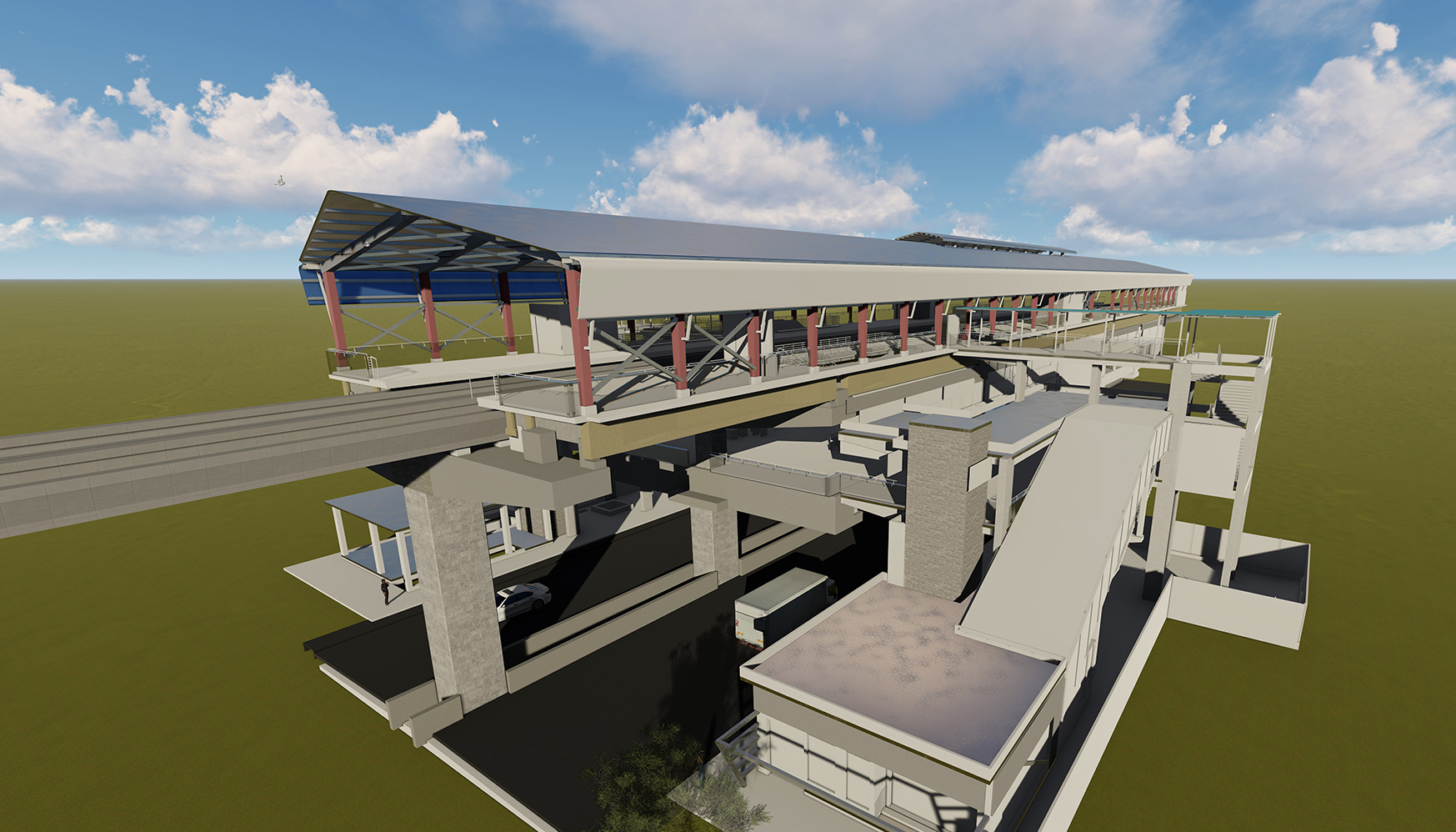
Hi Sabrina, thanks for making the time to meet with us. Can you tell us about the projects you are currently working on?
Pleasure. My team has the privilege to be working on some of the most iconic projects currently being developed and constructed in Australia and internationally. A big focus for me personally is Snowy 2.0, the largest committed renewable energy project in Australia, which is not only extremely rewarding but also technically stimulating. Snowy 2.0 is of national importance and will shape the future of the country’s renewable energy strategy which I am really proud to be a part of.
I’m also involved as a subject matter expert for Transport for New South Wales on Sydney’s Rozelle Interchange (aka Westconnex 3B). The Rozelle Interchange project is a unique and very complex underground motorway interchange, forming the centrepiece of Sydney’s future road network. The biggest challenge on this project is having multiple tunnels crossing over each other in a very small area underneath the city.
What I love about my role is the impact we can have on the future of Australia and how we can innovate to solve some of the industry’s most complex technical challenges.
With the team being involved in the majority of significant underground infrastructure developments over the last 20+ years, we‹ve developed expert knowledge of the local geotechnical and hydrogeological conditions, and associated mitigation measures to best deal with these.
You’ve had the opportunity to work on some of Australia’s most significant tunnelling projects in Sydney. What have been the biggest challenges you’ve found in delivering underground infrastructure for Australia’s largest city?
For every project, there are different key challenges, however, an increasingly common challenge is risk allocation for large underground infrastructure projects, especially to cover geotechnical aspects. Although this is slowly evolving, the majority of the risks have been traditionally assumed by the contractor under conventional design and construct contracts. This can lead to major commercial tensions, delays and unnecessary controversies, to the detriment of the actual technical solution and the long-term asset performance. The industry has seen a lot of friction related to the risk exposure of contractors and the many industry experts are calling for a more equitable risk allocation.
SMEC is lucky enough to have in-house international expertise on such risk sharing mechanisms, in particular Alex Gomes, our Chief Technical Principal, Tunnels and Underground. Alex acted on behalf of the International Tunnelling Association as a peer reviewer during the International Federation of consulting Engineers (FIDIC) Emerald Book preparation. This book provides guidance for the implementation of risk-sharing mechanisms for underground works, where the party that is best positioned to manage the risk, is allocated that risk. Alex has been engaged in the development of contractual risk sharing mechanisms for a number of Australian and international projects. Through his expertise, SMEC pioneered this approach in Australia, by advising on the implementation of the ‘Geotechnical Baseline Reports’ for Snowy 2.0.
The industry is making progress on achieving more equitable allocation of risks and it is great to be at the forefront of this change, helping our clients to transform the industry and achieve better long-term outcomes.

Tantangara Dam Snowy Hydro 2.0 – Jan 2021
You have extensive experience in tunnelling design. Does that knowledge help your teams understand the geotechnical challenges specific to Sydney, and how do you couple that knowledge with new innovations?
With the team being involved in the majority of significant underground infrastructure developments over the last 20+ years, we‹ve developed expert knowledge of the local geotechnical and hydrogeological conditions, and associated mitigation measures to best deal with these.
In terms of geology, there are significant faults and dykes crossing the Sydney Central Business District (CBD). Combined with the city’s proximity to the harbour, this can present major challenges in terms of groundwater inflows and grouting requirements to avoid excessive long-term groundwater drawdowns and associated settlement impacts. Knowledge from previous projects naturally informs subsequent projects, where key learnings and lessons learned are drawn upon to provide tangible value to our clients.
For every project, there are different key challenges, however an increasingly common challenge is risk allocation for large underground infrastructure projects, especially to cover geotechnical aspects.
Last year you presented virtually to the World Tunnel Congress. How important do you think it is to share knowledge and experience amongst your peers on these platforms?
Knowledge-sharing and industry insights form a central part of building the expertise of our team, in addition to the experience gained through project work. In the tunnelling industry, knowledge-sharing is key as the state of the art is continuously evolving and there’s no established national Australian tunnel design standard, for example. Technical knowledge is not only drawn from guidelines and standards, but also from experience and lessons learned.
Our team members are participating actively in tunnelling industry bodies and associations. Sharing industry knowledge also benefits our clients, giving them access to the latest innovations and global industry best practice to achieve optimal project outcomes.
As an underground infrastructure specialist, how has your experience as a designer helped you in delivering independent proof engineering, design review/verification and compliance services?
I started my career in design and construction, being involved in projects from start to finish, including the tendering phase, the detailed design phase through to the construction phase. This exposure built my expertise and helped me quickly identify high-risk focus areas, allowing me to derive optimised design solutions, whilst considering constructability aspects early on for example.
My experience as a Designer or Independent Checker/Certifier provides me with a unique vantage point on the direction of the industry in both local and international contexts. I leverage this end-to-end expertise when providing services to make sure our solutions are tangible, realistic and reflect the latest industry best practice.
2020 was a strange year as we all know with COVID, and it was unprecedented. How did you and your team navigate project delivery whilst managing safety and team cohesion?
Many functions in SMEC already work with global teams, so, to some extent, it was business as usual, but that said, we did have to adapt. Unlike other industries, our team has been very busy throughout 2020. I like to think that’s a testament to our expertise. We’re actually growing our team at the moment due to a very strong pipeline of work. Despite the pandemic and its challenges, we continue to deliver reliable services with increased flexibility. In fact, COVID might even have allowed us to get closer to our clients in some unexpected ways. We all embraced it, and 2020 has been quite a positive year in terms of meeting our clients’ needs, project delivery and teamwork. It will be interesting to see how we maintain these positive aspects as we gradually, and hopefully soon, move out of the pandemic.
Related
insights
 Breaking new ground on Bangladesh’s first underwater tunnel
Breaking new ground on Bangladesh’s first underwater tunnel
Bangladesh is a country of rivers. The Karnaphuli River services the city of Chattogram (formerly called Chittagong), the largest sea port of Bangladesh. With the rapid development of southeast Bangladesh, especially in the regions south of Chattogram, the two existing bridges over the Karnaphuli River are inadequate to accommodate the increase in traffic. With a population of over six million, the heavily congested city of Chattogram is closely surrounded on the east by the Chittagong Hill Tracts and the west by the Bay of Bengal, making an additional bridge type crossing of the Karnaphuli River unviable.
 Building more climate-resilient infrastructure on soft soils
Building more climate-resilient infrastructure on soft soils
SMEC’s Dr Richard Kelly, Chief Technical Principal – Geotechnical Engineering, has contributed to industry-leading research and innovation in the field of soft soil engineering.






